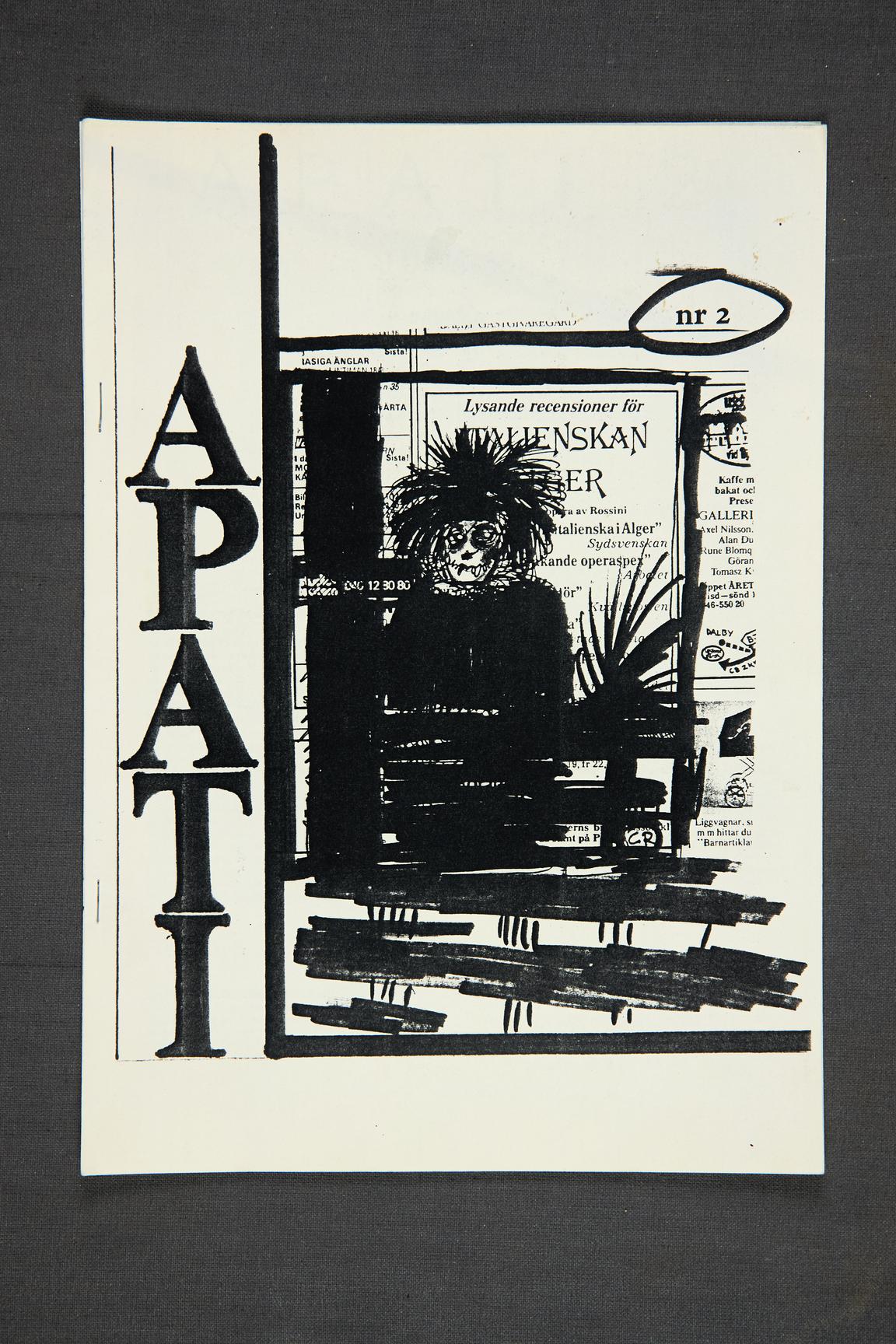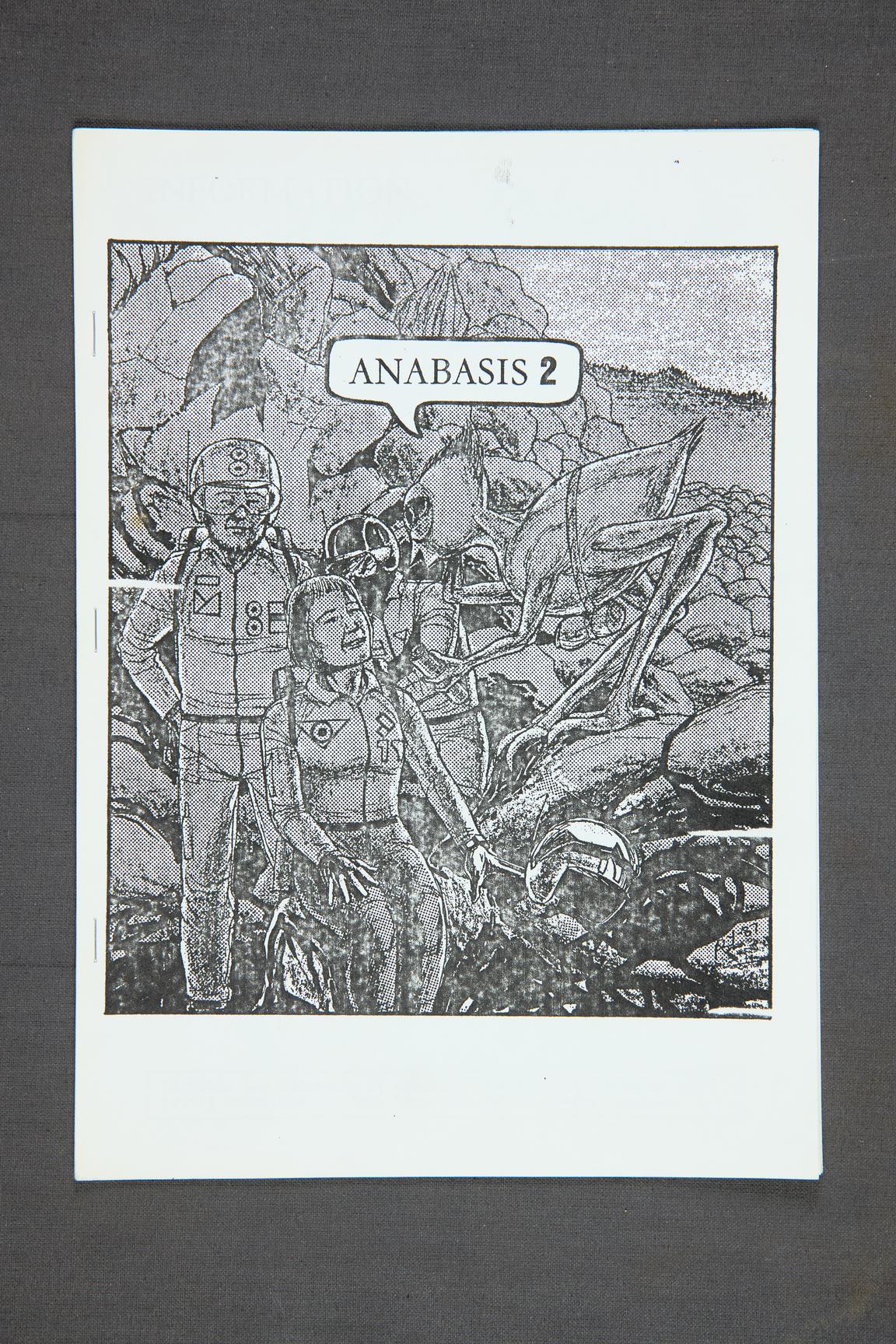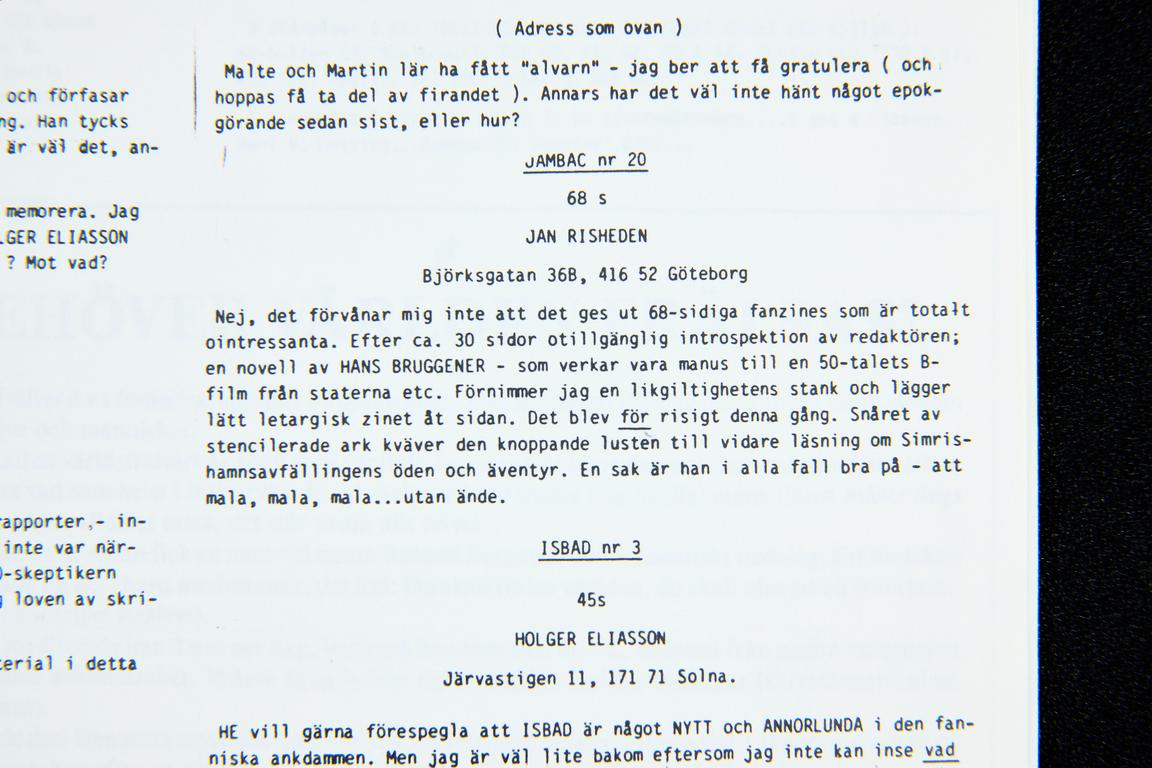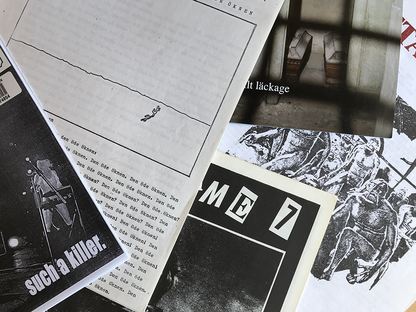Fanzine Collection
Swedish zines issued in 1987-1999, including member lists and various zine related materials.
About the collection
Eleven archive boxes of material: Swedish zines from the late 1980s and the entire 1990s. The contents vary widely, and mirror, among other things, literary texts and political debate as well as an extensive meta material concerning zines, including reviews and debate on zine content and production.
The Fanzine Collection says a lot about the social context where the zines were created: an eager debate progressing across the stenciled pages, often spanning several issues and sometimes multiple publications. Parallel to a more firmly established culture of letters to the press, supported by many journals and magazines long before the heyday of zines, the latter offered a generous alternative arena where many voices could be heard, in matters great and small. The collection is made even more interesting by the fact that the 1990s was among the last periods when letters to the press still held the position currently dominated by contemporary comments sections, blogs and social media posts. The collection is also clearly focused on a specific place and timespan.
Additionally, zines played a transitional role at a time when self-publishing did exist, but before publication services has been systematically commercialised to the extent they are now. To those who wished to disseminate a text and had neither the internet or any publication services to hand, issuing zines was an accessible option.

The essay Zines på bibliotek - Eller hur vi försöker leva med vårt dåliga samvete (2025) by Jacob Hurtig and Karl Pettersson argues that zines offer "a sort of freedom, both aesthetic and content related [...] what was important enough to highlight and make room for [...] a strength and opportunity that it is there."
The materiality of zines is also touched upon in their essay, saying that [zines] "must be within reach, they must be touched, and they require participation in order to be understood. In this way, they are personal, subjective and corporeal, which prevents the separation of materiality, contents and context, and they do not allow deconstruction in order for each component to be described independently, without key aspects being lost. We are seeing that [...] zines cannot be understood from an intellectual position alone; in addition, they need to be handled as social and tactile objects."
"On the surface, zines do not give the impression of being anything special. They are a niche cultural phenomenon said to have originated in American sci-fi circles in the 1930s, and the "zine" concept is a portmanteau formed by the words ”fan” and “magazine”, coined a decade later. These zines originated in established magazines such as Amazing Stories and their letter columns, which the readers eventually outgrew. A new arena for communication was needed. Later, zines have entered and become part of a variety of subcultures, and treated [...] subjects including music, crafts, comics, sports, movies, politics, cooking, autobiography, philosophy, art and more. There is a zine for almost every niche imaginable. Zines have also come in many forms, depending on individual preferences and the materials and technologies available. Often (but not always) they have been reproduced on paper with the aid of a temporarily available machine for duplication, whether this has been a mimeograph, a copy machine, a risograph or a printer. For this reason, the “original” might look different: typewritten, word processed, drawn; with a glue and scissors layout, or a computer assisted one. Zines may be entirely handmade on top-quality paper, or printed on rumpled A4 sheets stapled together at the corner.
What makes zines special might vary a lot, but includes the "feeling that someone has taken a private initiative to highlight something that matters to them, though it is completely incomprehensible to almost everyone else."
"Within the zine culture, the consumer role has not only been perceived as a cause of regression and enfeeblement, but as something that reduces people's creative horizon and ability. This has made the zine culture into a participant culture, largely lacking consumers or observers."
Acquisition history
The Fanzine Collection was donated to the Faculty of Literature at the University of Gothenburg. From there, it eventually made its way to the Humanities Library.




Access the collection
The collection is held in the closed stacks at the Humanities library. It is available for reading room use only.
Catalogue
The collection awaits cataloguing. The database post denotes the collection as a whole.
In Libris
In Supersök
Humanities library
Renströmsgatan 4
405 30 GOTHENBURG
Phone: 031-786 17 45
Text:
Anna Lindemark, Jacob Hurtig and Karl Pettersson
Suggested research topics
- An overview of the collection's contents. What is represented here, and how does it mirror the time and context of the material?
- Zine production, reproduction techniques, illustrations and texts.
- Social contexts of fanzines in the 1980s and 1990s, possibly in relation to later digital platforms.
Please contact us if you have any suggested research topics you would like to share!